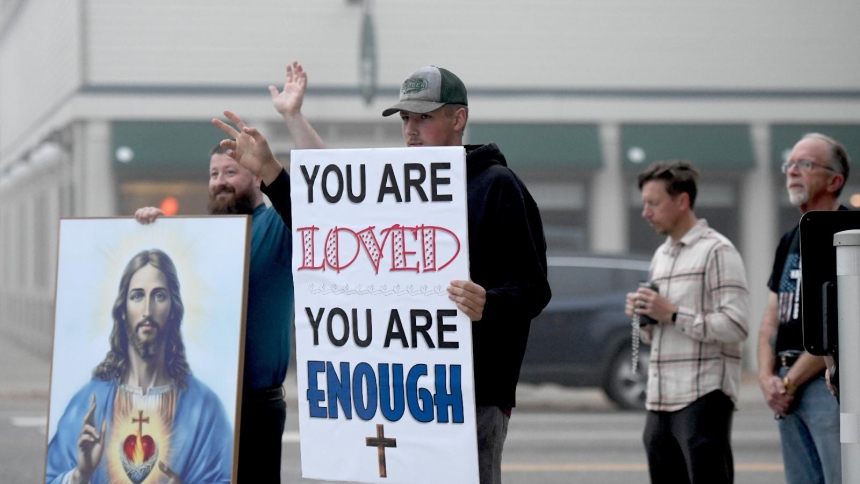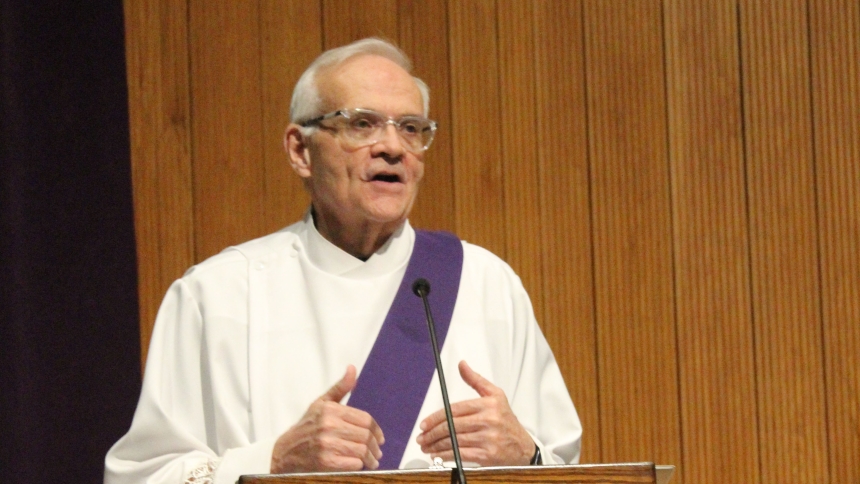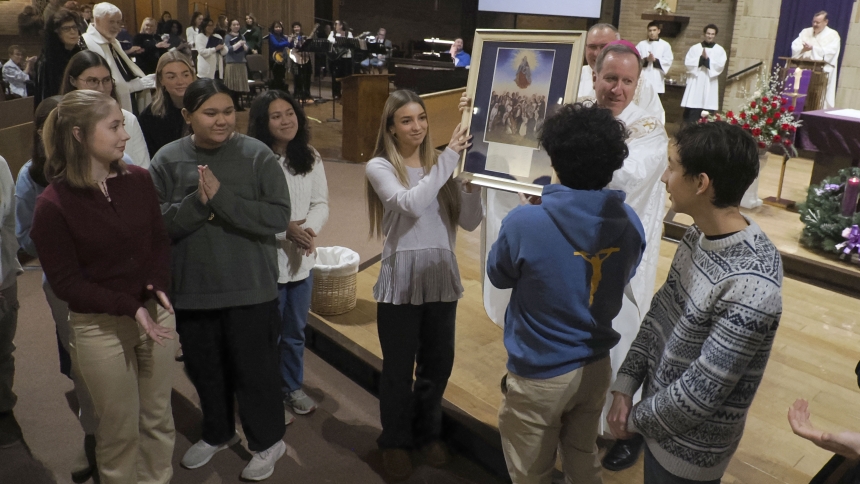
As published in the Northwest Indiana Catholic on February 19, 2017
When a man is ordained a deacon, (whether transitionally on the way to priesthood or as a permanent deacon), he solemnly promises to pray the Liturgy of the Hours every single day. Thousands of lay people pray it daily as well, finding it to be a solid building block for their spiritual lives.
Religious communities, especially the contemplative ones, regularly chant the psalms as the guiding structure of their communal life. The Liturgy of the Hours is the official prayer of the Church. So, what is it exactly?
A combination of the psalms, Scripture readings and spiritual reflections from the saints, doctors and Councils of the Church, the Liturgy of the Hours is a way to prayerfully mark our entire lives by lifting our minds and hearts to God.
Throughout the ages of Christianity, monks and nuns traditionally chanted all 150 psalms every week, seeing in these poetic hymns a superlative way to worship and praise God. The psalms reflect every human experience and emotion and relate them to God - gratitude, love, awe, praise, fear, suffering, anger, depression, betrayal, faith and death. The psalms are a beautiful and moving patrimony from the Jewish Scriptures that Christians have adopted to glorify the Lord.
The principal moments of prayer which gather those who offer the Liturgy of the Hours are as follows. The Office of Readings or Vigils usually occurs somewhere between 3-5 a.m. as the community awakes from sleep, gathers in the chapel, chants some psalms, listens to longer readings from the Scriptures and reflections of the saints, beginning the day in prayer.
When I go to the New Melleray Trappist monastery in Iowa for retreat, I pray Vigils with the monks at 3:30 a.m.; it’s when their day starts! The chapel is pitch dark; the sanctuary lamp is the solitary light. The monks enter, take their places in the choir stalls and the world is peaceful and still.
The theological idea of keeping vigil with the Lord, waiting and watching for the Dawn from on High to break into the world, finds powerful expression in these early morning hours of exquisite silence.
Lauds, or Morning Prayer, marks the moment of sunrise as another day of prayer, work and mission begins. Again, a combination of psalms, Scriptures and petitions, Morning Prayer focuses on the resurrection of the Lord as the spiritual focal point of our lives as Christian disciples and the intentional consecration of the daily work before us.
The Benedictus is the moving prayer of Zechariah, the father of John the Baptist. Zechariah proclaims it in joyful praise immediately after he is again able to speak, and has become a consistent part of Morning Prayer. In the seminary, Lauds gathered the community together at the beginning of each day; I miss praying it with others.
The minor hours, which are shorter, include: Mid-Morning, Mid-Day and Mid-Afternoon Prayer. Lasting just a few minutes, these brief pauses allow us to take a break from our work in order to lift our minds and hearts to God. I especially like the pithy Scripture readings which always inspire.
Vespers, or Evening Prayer, focuses on the Passion and death of Jesus and on our own mortality as we pray while the shadows of the fading daylight lengthen. The fleeting nature of life, gratitude for the day that is almost over, the enduring promise of the Kingdom of Heaven and the charitable need to remember the dead all find expression in the prayers and structure of Vespers.
Mary’s Magnificat, her hymn of praise to the Lord during her visit to Elizabeth, is the canticle at the end of the day. Many of Paul’s epistles which articulate the cosmic nature of the Kingdom, the end of the world as the summation of human history and Jesus Christ as Savior and Redeemer also find a place in these evening texts. Most communities and individuals pray Evening Prayer right before dinner.
Compline, or Night Prayer, occurs right before sleep as we seek protection, rest and blessing from the Lord throughout the night. The Canticle of Simeon, which he chanted as he held the Christ Child in the Temple, speaks of surrender and fulfillment as we enter the nocturnal “death” of sleep.
An examination of conscience and a hymn to the Blessed Virgin Mary make this short and powerful prayer complete. I especially love the antiphon for Simeon’s canticle, “Protect us Lord as we stay awake, watch over us as we sleep, that awake, we may keep watch with Christ and asleep, rest in his peace.”
As you can see, the Liturgy of the Hours is a traditional and profound way to weave the whole of each day in prayer. When we pray it, we are doing so in unison with all of the bishops, priests, deacons, religious and thousands of lay faithful throughout the world. We are offering our hearts and lives to the Lord for the sake of the salvation of the world and the flourishing of the Church.
Some people pray just Morning and Evening Prayer, using an abbreviated book; others pray all of the hours, using a four-volume set of books. I started praying the Liturgy of the Hours back in 1981 when I was a freshman in college seminary. At first, it felt confusing and difficult, like I needed seven fingers and four ribbons to mark all the different pages.
After 36 years, this form of prayer feels like an old friend, a familiar language that allows me to praise, love and listen to God in comm with the whole Church. If you have never tried it, I encourage you to give it a go.
You will not be disappointed!
+ Donald J. Hying


